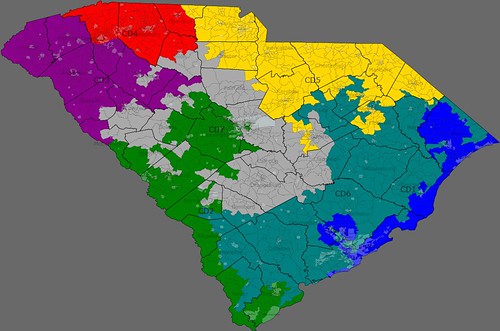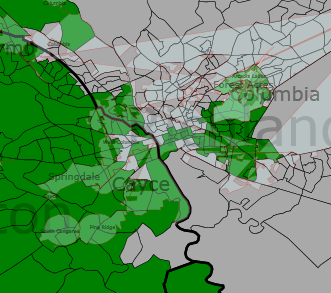Today, in a very unexpected ruling, the Supreme Court upheld Section 5 of the Voting Rights Act, which requires certain covered jurisdictions to seek “preclearance” from the Department of Justice before making any rule changes that affect voting. Adam Bonin explains:
[M]any conservatives have believed that the rigors of Section 5 preclearance exceeded Congress’ 15th Amendment authorization, given how much time has passed since the days of Bull Connor, and they thought they had their ideal plaintiff in Northwest Austin Municipal Utility District Number One (“NAMUDNO”), created in 1987 to provide waste collection and other public works services to about 3,500 residents. Before 2004, elections for its board were held in private homes or garages; they wanted to move the elections to public places like elementary schools. Because they’re in Texas, Section 5 applied, even though there was no evidence that NAMUDNO itself had ever discriminated on the basis of race.
And many liberals feared, especially after oral argument (PDF), that this Court’s 5-4 conservative majority would use the opportunity to gut Section 5, especially given its disparate treatment of Southern jurisdictions, with the Chief Justice asking the NAACP’s counsel “So is it your — is it your position that today southerners are more likely to discriminate than northerners?” and Justice Scalia noting, “Wasn’t Virginia the first State in the Union to elect a black governor?”
Today, however, the bullet was dodged, albeit on somewhat technical grounds. In an 8-1 opinion authored by the Chief Justice, with only Justice Thomas dissenting, the Court effectively rewrote parts of the Voting Rights Act to allow NAMUDNO to apply in federal court for a permanent “bailout” from the preclearance provisions based on a documented record of behaving itself in this realm, a remedy previously allowed only for states and counties as a whole, and chose not to reach the larger constitutional question.
Leaving aside all the questions about how this ruling came about despite Roberts’ apparent hostility to the VRA, or what its narrow technical nature means for future rulings on the same subject, Rick Hasen explains the political ramifications:
The key political point is that Section 5 will remain in place during the next round of redistricting, and it will be redistricting supervised by the Obama Administration’s DOJ. We have already seen that the Obama Administration appears more protective of voting rights than the Bush Administration’s DOJ. So this will matter a great deal for the next decade of politics in terms of minority electoral success, even if Section 5 is struck down next decade.
In other words, while Justice Roberts and his conservative brethren might dismantle Section 5 at some point, this is a very good ruling for us with the census and the start of redistricting just a year away.






